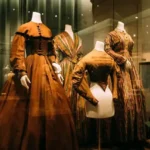Introduction to Haircuts
Haircuts have been a fundamental aspect of personal grooming and self-expression for millennia. From ancient civilizations to modern times, the practice of cutting and styling hair has evolved significantly, reflecting cultural, social, and technological changes. Haircuts serve not only as a means of maintaining hygiene but also as a way to communicate identity, status, and individual style. This article explores the historical development, cultural significance, and contemporary trends in haircuts, offering a detailed examination of how this seemingly simple practice plays a profound role in human society.
Historical Perspectives on Haircuts
The history of rizure za svadbu reveals a fascinating journey through human civilization. In ancient Egypt, for instance, hairstyles were used to denote social class and profession, with elaborate wigs and shaved heads signifying different roles within society. Similarly, in ancient Greece and Rome, haircuts were often linked to social status, with specific styles indicating one’s rank or profession. As we move through the Middle Ages, the symbolism associated with haircuts became intertwined with religious and moral connotations. The Renaissance period saw a resurgence of elaborate and fashionable hairstyles, reflecting the era’s emphasis on art and individualism. Understanding these historical contexts helps us appreciate how haircuts have always been more than just a cosmetic practice; they have been deeply embedded in societal structures and cultural norms.
Cultural Significance of Haircuts
Haircuts carry substantial cultural significance across various societies. In many indigenous cultures, specific hairstyles are imbued with ritualistic meaning and are used to signify important life events or transitions. For example, Native American tribes often have distinctive hairstyles that convey tribal identity and personal achievements. Similarly, in some African cultures, intricate braiding patterns serve as symbols of community affiliation and social status. In contrast, contemporary Western societies often view haircuts as a form of personal expression and fashion. This shift from collective cultural symbols to individualistic statements reflects broader changes in societal values and the ways in which people relate to their cultural heritage.
Modern Haircut Trends
The landscape of haircut trends has transformed dramatically in recent decades. From the iconic mullets of the 1980s to the sleek undercuts of the 2000s, each era brings its own set of popular styles that reflect broader social and cultural movements. Today, we see a blend of retro influences and innovative new styles. The rise of social media has significantly impacted haircut trends, with influencers and celebrities playing a crucial role in popularizing new looks. Moreover, the current trend towards personalization and customization in haircuts allows individuals to express their unique personalities and embrace diverse styles. This modern approach highlights the evolving nature of beauty standards and the growing importance of individuality in personal grooming
The Role of Technology in Haircutting
Advancements in technology have revolutionized the practice of haircutting. The development of specialized tools, such as electric clippers and precision scissors, has made it easier for both professional barbers and individuals to achieve desired hairstyles with greater accuracy. Additionally, digital technologies, including virtual try-on apps and online haircut simulators, allow people to experiment with different styles before committing to a cut. These innovations not only enhance the overall haircutting experience but also provide greater opportunities for creativity and experimentation. The integration of technology into haircare reflects broader trends in how technology influences various aspects of daily life, including personal grooming.
Haircuts and Personal Identity
Haircuts are a powerful tool for shaping and expressing personal identity. Throughout history, people have used hairstyles to signal their social status, cultural background, and personal preferences. In contemporary society, the choice of haircut can reflect one’s personality, mood, or even political beliefs. For instance, a dramatic change in hairstyle might signify a major life transition or a desire to reinvent oneself. The ability to change one’s hairstyle easily and frequently underscores the role of haircuts in personal expression and self-image. This dynamic interplay between haircuts and identity highlights the broader psychological and social dimensions of grooming practices.
Economic Impact of the Haircut Industry
The haircut industry is a significant economic sector with a substantial impact on the global economy. Salons, barbershops, and hair care products contribute to a multi-billion-dollar industry that supports millions of jobs worldwide. The economic significance of haircuts extends beyond the immediate services provided; it includes the production and sale of hair care products, equipment, and accessories. Furthermore, the industry’s economic impact is amplified by the ripple effect on related sectors, such as fashion and beauty. As trends evolve and new styles emerge, the haircut industry continues to grow and adapt, reflecting broader economic patterns and consumer preferences.
Future Trends in Haircuts
Looking ahead, several emerging trends are poised to shape the future of haircuts. Advances in technology, such as AI-driven hair design and augmented reality, are expected to further transform the haircutting experience. Additionally, there is a growing emphasis on sustainability and eco-friendly practices within the industry, with many salons adopting green initiatives and using environmentally conscious products. The increasing popularity of gender-neutral and inclusive haircutting practices also points to a more diverse and accepting approach to personal grooming. As society continues to evolve, these trends will likely influence the ways in which people approach and perceive haircuts, reflecting broader changes in cultural attitudes and values.
Conclusion
Haircuts are much more than a routine grooming practice; they are a reflection of cultural history, personal identity, and societal trends. From ancient civilizations to modern times, the art of haircutting has evolved significantly, mirroring changes in social structures, cultural values, and technological advancements. As we look to the future, the role of haircuts in personal expression and identity will continue to evolve, shaped by emerging trends and innovations. Understanding the multifaceted nature of haircuts provides valuable insights into how this seemingly simple practice influences and reflects broader aspects of human society.


